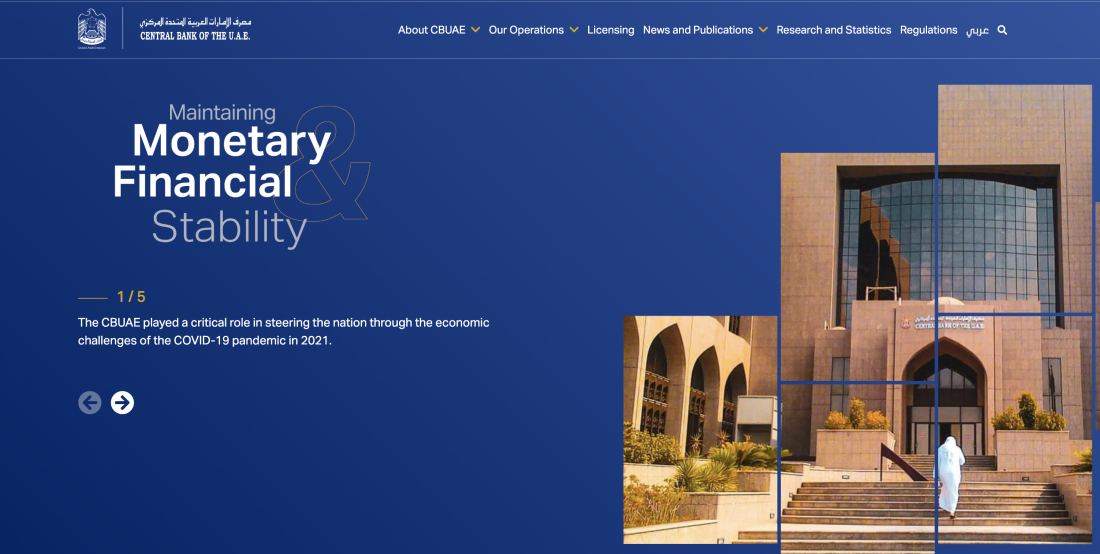Technological progress and its impact on the financial sector resulted in higher adoption of digital currencies and a shift to cashless and contactless payment methods. This pushed many banks to study more closely the opportunities that central bank digital currencies (CBDC) may offer. The Saudi Central Bank is not an exception, especially if we consider that it already has experience in creating a CBDC.
What you will learn:
Project Aber
The Saudi Central Bank (SAMA) collaborated with the Central Bank of United Arab Emirates (CBUAE) to test the use of joint digital currency and distributed ledger for cross-border payments. Commercial banks also participated in the project Aber by actively running nodes on the network. It was necessary to learn about challenges and risks from the perspective of a commercial bank to be able to address them while developing the CBDC further.

The project confirmed the viability of a single digital currency as an effective instrument for domestic and cross-border settlements between two countries. Moreover, the project demonstrated that it is possible to develop a distributed payment system that significantly improves compared to a centralized payment system. The performance objectives were exceeded, which proved that the application of distributed ledger technology offers higher performance levels without compromising user privacy or safety.
Project Aber laid a solid foundation for the further development of central bank digital currency by the Saudi Central Bank.
Current CBDC developments in Saudi Arabia
The Saudi Central Bank continues testing the possibility of CBDC introduction with an aim to achieve its Saudi Vision 2030 objectives. The next phase will involve the testing of market readiness for implementing CBDC and the economic impact of such an application.

SAMA turns its attention to the domestic use of CBDC. This is the main reason why local fintech companies and banks are going to become a cornerstone of the project. The Saudi Central Bank has engaged with local banks, fintech companies, third-party technology, and consulting providers to get a better understanding of the CBDC functionality and test design options.
The bank doesn’t limit itself to local companies only. It plans to consult with international bodies to ensure that the digital currency will create a more resilient payment ecosystem and speed up digital transformation in the region.
Motives behind the development of CBDC
SAMA pursues several targets by exploring the possibilities of CBDC introduction.
Financial Innovation
The effect of the CBDC introduction can be compared to the introduction of banknotes in the 19th century. The effects of such innovation are long-lasting for the local economy and worldwide.
Safety of payments
With the development of cryptocurrencies, households tend to reduce the use of risk-free bank money. By introducing the CBDC, a central bank can provide people access to a digital payment medium with a direct claim on the central bank which is safer than private money (cryptocurrencies) issued by non-bank entities.
Financial inclusion
The CBDC enables the unbanked population to get access to financial services. For the underbanked population, the CBDC may lay a foundation for new potentially cheaper financial services the private sector provides. So, fintech companies can build upon the CBDC infrastructure to offer financial services to people who otherwise cannot access them due to their high cost.
Cross-border payments
Cross-border payments usually involve many participants and jurisdictions with varying regulatory requirements. That’s why such transfers are very complex, slow, and expensive.
The CBDC is likely to impact the sector of cross-border transfers to the greatest extent. A CBDC can be easily deployed in any jurisdiction or any currency system through technological standards applied in networks. This will simplify and speed up cross-border transfers while reducing their cost.
Transparency and safety
Digital transfers are traceable. It may offer new opportunities to ensure that all the regulatory requirements regarding money laundering, the financing of terrorism, and other aspects are met.
Challenges of introducing the CBDC
Introducing new technology is always connected with challenges, and the CBDC is no exception.
Legal constraints
Legal constraints are among the main challenges that central banks face on the way to CBDC issuance. Even if there is a legal foundation for the CBDC development, still some laws shall be adjusted to regulate issues connected with specific CBDC features such as programmability.
Disruption in the operation of the banking system
If not implemented and integrated into the existing banking system properly, the CBDC can harm the bank’s core business. Considering that banks are interlinked with all sectors, such financial implications may go beyond just the banking or financial system but spread over the country’s economy.
Technical challenge
Internet connectivity in rural areas, cyber attacks, and interconnectivity with existing systems are those technical challenges that have to be solved before the CBDC is introduced massively.
Financial literacy of the population
For some segments of the population, using new technology is difficult. That’s why implementing the CBDC can exclude these population layers from the financial services available earlier. For banks that aim to issue the CBDC to boost the financial inclusion of people, this is a serious challenge.
Conclusion
Even though testing is planned, SAMA emphasizes that the final decision about the CBDC introduction hasn’t been made. First, the potential benefits and risks of such an innovation will be explored, and only then, a final decision can be made on whether the bank needs the CBDC or not.


